The food versus fuel debate is back in full force, creating division between the crop and livestock industries at a time when it would behoove them to work together against the very real threat of animal activism.
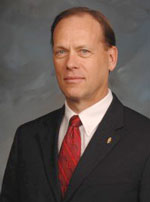 This reached an interesting level last week when Rick Tolman, CEO, National Corn Growers Association (ZimmComm client) published an editorial taking the American Meat Institute to task for joining in a coalition with groups like the Environmental Working Group, National Resources Defense Council and Friends of the Earth. These groups are well documented (pdf) as being extremists with an agenda harmful to agricultural production. They also have their own relationships with other extremist groups like the Humane Society of the United States. Rick says in his editorial, “As the self-proclaimed representative of the “companies that process 95 percent of red meat and 70 percent of turkey in the U.S. and their suppliers throughout America,” AMI really should avoid such curious connections.” I think that sounds very logical. You can listen to an interview with Rick on this subject here: TolmanAMI4910.mp3
This reached an interesting level last week when Rick Tolman, CEO, National Corn Growers Association (ZimmComm client) published an editorial taking the American Meat Institute to task for joining in a coalition with groups like the Environmental Working Group, National Resources Defense Council and Friends of the Earth. These groups are well documented (pdf) as being extremists with an agenda harmful to agricultural production. They also have their own relationships with other extremist groups like the Humane Society of the United States. Rick says in his editorial, “As the self-proclaimed representative of the “companies that process 95 percent of red meat and 70 percent of turkey in the U.S. and their suppliers throughout America,” AMI really should avoid such curious connections.” I think that sounds very logical. You can listen to an interview with Rick on this subject here: TolmanAMI4910.mp3
 Now here’s where I can provide you with an example of how social networking is useful. I tweeted a link to Rick’s editorial and asked AMI for their response. They tweeted me back a link to their response within a couple days. It is attributed to J. Patrick Boyle, President/CEO, American Meat Institute and starts out by saying, “AMI remains committed to our opposition to ethanol subsides and tax credits, a position that is supported by a broad cross-section of producers, processors, consumers and, especially, American taxpayers.
Now here’s where I can provide you with an example of how social networking is useful. I tweeted a link to Rick’s editorial and asked AMI for their response. They tweeted me back a link to their response within a couple days. It is attributed to J. Patrick Boyle, President/CEO, American Meat Institute and starts out by saying, “AMI remains committed to our opposition to ethanol subsides and tax credits, a position that is supported by a broad cross-section of producers, processors, consumers and, especially, American taxpayers.
In fact, the federal government has pumped as much as $1.95 per gallon of taxpayer money into subsidies for the production of corn-based ethanol.” The response lists the issues they’re concerned about. So kudos to AMI for creating a response and responding to my request!
However, I have to point out that they didn’t mention their relationship with these extremist groups at all, which was the main focus of Rick’s editorial. I really don’t understand it anymore than Rick does. Seems very counter productive for their members. They’ve helped fund an ad in “The Hill” (pdf) which suggests that ethanol is bad for rural America. Kind of hard to justify that folks. That ad campaign is also funded by the Grocery Manufacturers Association which has aggressively used rhetoric and mis-information to blame ethanol for high food prices. The ad promotes a website called FollowTheScience.org which I’ve heard said should be called FollowTheMoney since it’s mostly a collection of anti-ethanol documents or studies that were funded by the supporting groups and that includes AMI.
It’s also interesting to note that AMI represents meat processors and packers yet their response seems to suggest they represent farmers and ranchers, “American ranchers and livestock producers are the best in the world at what they do – they can compete with anyone on the planet. And they’re not opposed to competing for corn, as long as they can compete for it on a level playing field.”
I think it’s an unfortunate situation. I’ve spoken with lots of corn farmers and beef producers on this issue. In fact, there are quite a few who do both. It is certainly a divisive issue. How would you solve it? I invite your comments and suggestions. But keep it friendly okay?
Post Update: NCGA CEO, Rick Tolman, has published a statement in response to the AMI statement. It’s title, “It’s Not About Ethanol.”

 According to their promotional material, “the
According to their promotional material, “the 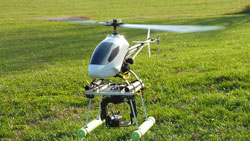 This flying machine has got to appeal to the kid in any farmer or rancher who loves to play with remote-controlled toys.
This flying machine has got to appeal to the kid in any farmer or rancher who loves to play with remote-controlled toys. 

 Now here’s where I can provide you with an example of how social networking is useful. I tweeted a link to Rick’s editorial and asked
Now here’s where I can provide you with an example of how social networking is useful. I tweeted a link to Rick’s editorial and asked 
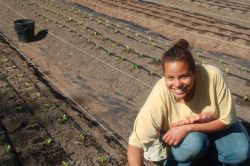
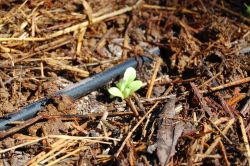

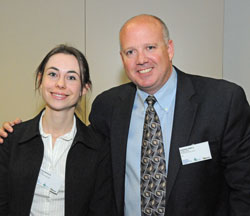 Sophie Marquis works for
Sophie Marquis works for